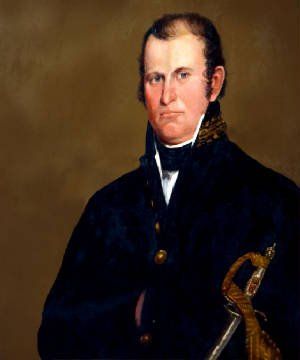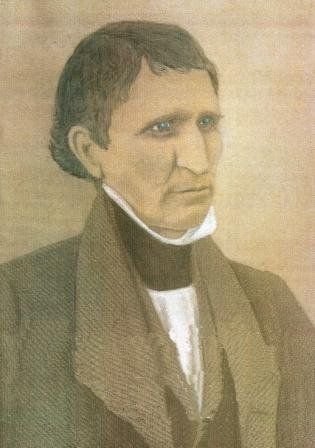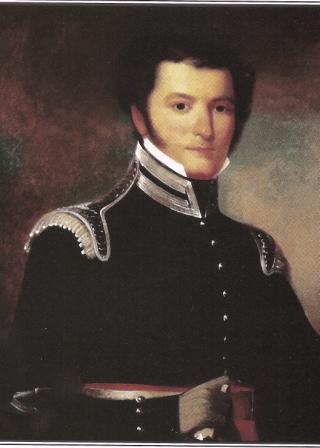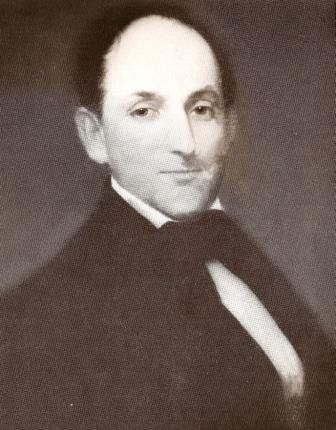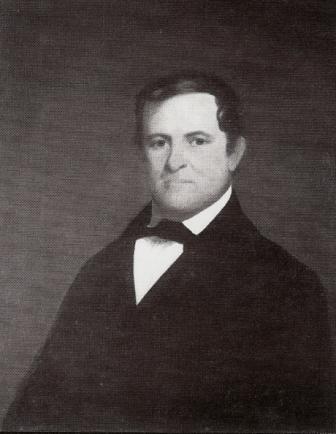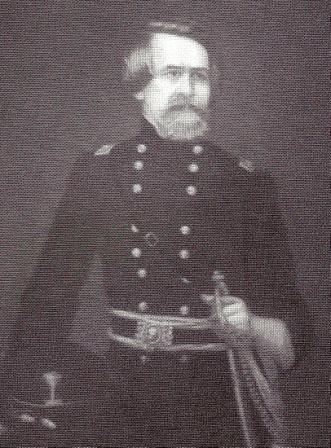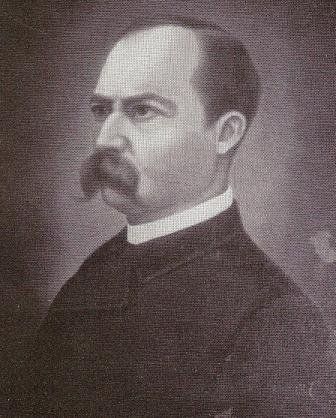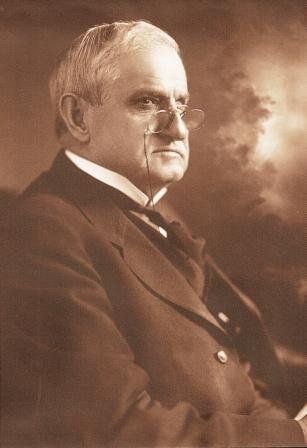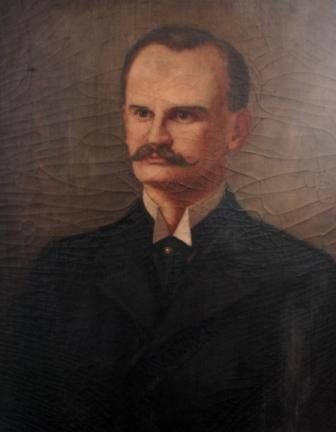ABOUT THE TEN GOVERNORS
Andrew Pickens (1779-1838). Son of the Revolutionary General, Andrew Pickens “the Wizard Owl,” and father of Francis W. Pickens, one of South Carolina’s Confederate War governors, Andrew Pickens served as governor of South Carolina from 1816 to 1818. He had previously served in the War of 1812. During his term of office Pickens oversaw many of the “internal improvements” which were being made in the state. He moved around quite a bit during his life but lived at Halcyon Grove in Edgefield and owned Oatlands Plantation some seven miles north of town during the last decade of his life.
George McDuffie (1790-1851). Perhaps one of the most influential leaders of Nineteenth Century America, George McDuffie was the author and principal promoter of the “Nullification Theory,” which postulated that States had the right to nullify a Federal law with which it disagreed. This theory set the South on a course which ultimately led to Secession. Having been born and raised in Georgia, McDuffie came to South Carolina as a young man and was quickly recognized as one of the brightest young men of his time. He studied law and became a partner of Eldred Simkins in Edgefield. In 1820 he was elected to the United States House of Representatives where he served for six terms. It was during his tenure in Congress that he gained national fame as an orator and vigorous supporter of State’s Rights. He served as Governor from 1834 to 1836 and as United States Senator from 1843 to 1846. Having been wounded in a duel in 1822, McDuffie suffered throughout his life from the wound and ultimately died of it in 1851.
Pierce Mason Butler (1798-1847). Scion of the famous Butler Family of the Edgefield District, Pierce M. Butler initially pursued a military career, which took him to the west fighting Indians in the 1820s. In 1829 he resigned his commission and returned to South Carolina where he became the President of the Bank of South Carolina in Columbia. When war broke out with the Seminoles in Florida, Butler volunteered and served as a lieutenant colonel. In 1836 he was elected Governor of the State. In his role as Governor, he is particularly remembered for advocating universal public education. Following his term as Governor, Butler became U.S. Agent to the Cherokee and Comanche Indians in the Southwest. In 1846 when war broke out with Mexico, Butler was again called on and became Colonel of the Palmetto Regiment. He was mortally wounded on the battlefield at Churubusco.
James Henry Hammond (1807-1864). Born in Newberry District to a schoolmaster from New Hampshire, Hammond grew up in relative poverty in South Carolina. He developed an overpowering ambition to succeed financially and politically. Graduating from the South Carolina College in 1825, Hammond eventually married Catherine Fitz Simmons, daughter of the wealthy Christopher Fitz Simmons, thus securing his financial future. In 1835 he was elected to the United States House of Representatives and became Governor of the State in 1842. Following his retirement from public life in 1844, Hammond devoted himself to his planting interests which he constantly expanded. In 1855 he built his mansion, Redcliffe, at his Beech Island. In 1857 Hammond returned to public life when he was elected to the United States Senate. While in the Senate he coined the phrase, “Cotton is King.” Hammond resigned from the Senate when South Carolina seceded from the Union. He died at Redcliffe in 1864.
Francis W. Pickens (1805-1869). Son of Governor Andrew Pickens, grandson of General Andrew Pickens of Revolutionary fame, Francis Pickens came to Edgefield in 1828 to practice law with his father-in-law, Eldred Simkins. Pickens served in the United States House of Representatives from 1834 to 1843 and in the South Carolina Senate from 1844 to 1845. Active in national Democratic circles, Pickens was offered ambassadorships to England and France, but chose not to accept them. After marrying the beautiful Lucy Holcombe of Texas in 1858 he accepted President Buchanan’s offer to become ambassador to Russia. In 1860 he resigned this post and returned to South Carolina where he was elected Governor, serving in that role until 1862, where he faced the challenges of the Civil War. Pickens was a wealthy planter who dispensed broad hospitality at Edgewood Plantation, the best known of the antebellum plantations of the Edgefield District.
Milledge Luke Bonham (1813-1890). Born in the Edgefield District, Milledge Bonham attended the South Carolina College and began the practice of law in Edgefield. He volunteered and served in both the Seminole campaign in Florida and the Mexican War. Elected to Congress in 1857 following the death of Preston Brooks, Bonham resigned upon the secession of South Carolina in 1860. He was given a commission as Brigadier General in the Confederate army in 1861. Later he served in the Confederate Congress until January 1863, when he was elected Governor. During his term, Bonham struggled to meet the demands of the Confederate government while providing security for the State against the Union troops who had occupied parts of the low country. During Reconstruction Bonham was actively involved in political affairs and, in 1878, was elected Railroad Commissioner, a post which he held until his death in 1890.
John C. Sheppard (1850-1931). Born in the Edgefield District near Sheppard’s Crossroads some 15 miles north of Edgefield, Sheppard was educated at Bethany Academy and Furman University. Admitted to the bar in 1871 he came to Edgefield to practice where he became active in Democratic politics. He was elected to the South Carolina House of Representatives in 1876 and became Speaker in 1877, being one of the youngest men to achieve this honor. He was elected Lieutenant Governor in 1882 and succeeded to the position of Governor in 1886 upon the resignation of Governor Hugh Thompson. A conservative Democrat, he opposed the candidacy of Benjamin Ryan Tillman and in 1892 was the conservative candidate to oppose Tillman. A stalwart citizen, Sheppard continued to be involved in political, business and community affairs in Edgefield until his death in 1931. Among his principal involvements in Edgefield was the Bank of Edgefield and the Opera House.
Benjamin Ryan Tillman (1847-1918). Born at Chester Plantation some ten miles south of Edgefield, Ben Tillman was the youngest child of a remarkable family noted for violence, brilliance and strong wills. He was educated in the plantation schools and at Bethany Academy, and lost an eye at an early age from infection. Following the War, Ben devoted himself to managing part of his mother’s plantation with apparently no thought to politics. However, as a result of the increasingly difficult problems facing farmers in the 1880s, Tillman became keenly interested in agrarian reform. Following a speech which he delivered at an agricultural meeting in 1885, Tillman was widely recognized as the champion of South Carolina farmers. Along the way, because of his devotion to the interests of farmers, he became known as “Pitchfork Ben.” In 1890, never having been elected to public office, Tillman was overwhelmingly elected Governor of the state. He served four years as Governor and was then elected to the United States Senate where he served until his death in 1918. Among his principal achievements were the founding of Clemson and Winthrop Universities and his long service as Chairman of the Senate Naval Affairs Committee.
John Gary Evans (1863-1942). Scion of the prominent Evans and Gary families of South Carolina, Evans was immersed in politics from an early age. The nephew and favorite of Edgefield General Martin Witherspoon Gary, one of the principal leaders of the 1876 Red Shirt movement, he became a member of the S.C. House of Representatives in 1888 and of the State Senate in 1892. In 1894 Evans was elected Governor where he served until 1897. He was Chairman of the 1895 Constitutional Convention. After the outbreak of the Spanish-American War in 1898, Evans was commissioned as a Major and Inspector General. Following the war he was named Civil Administrator of the City of Havana. He was married to Emily Plume of Waterbury, Connecticut in 1897 and had one daughter, Victoria. Evans lived much of the latter part of his life in Spartanburg, but, prior to his death in 1942, he gave his ancestral home, “Oakley Park,” to the Town of Edgefield. He and his wife are buried in Willowbrook Cemetery.
Strom Thurmond (1902-2003). Son of a prominent political leader of Edgefield, Thurmond developed an early interest in politics. Following his graduation from Clemson College, he began his career by teaching school and coaching athletics. In 1929 he was first elected to political office as Superintendent of Education of Edgefield County. In 1929 he read law in his father’s office and was admitted to the bar. In 1933 Thurmond was elected to the State Senate where he served until 1938 when he was elected Circuit Judge. In 1942, following the bombing of Pearl Harbor, he entered the Army and participated in the D-Day Invasion. He was one of the most decorated heroes of World War II from South Carolina. In 1946 Thurmond was elected Governor of South Carolina, and two years later became the candidate for President of the States’ Rights Democratic Party. In 1954, in an unprecedented election, he was elected to the United States Senate on a write-in vote. Thurmond served in the Senate for a total of forty-eight years, becoming the longest serving and oldest member of the Senate. He was Chairman of both the Judiciary and Armed Services Committees. Thurmond died in 2003 at the age of 100 and is buried in Willowbrook Cemetery.


